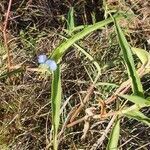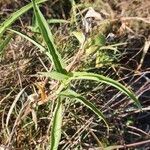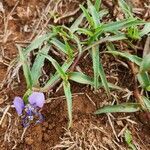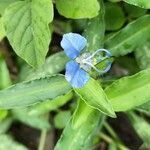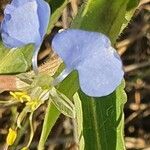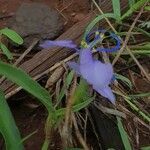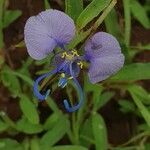Spreading annual herb or chamaephyte with long, trailing stems rooting at nodes and forming short erect branches and often subterranean stolons bearing reduced cleistogamous flowers. Leaves folded, linear to oblong, 20-70 mm long, margins wavy, pale greyish green, glabrous or puberulous. Spathes 1-2, terminal and leaf-opposed, shortly pedunculate, obliquely funnel-shaped with a short, acute apex, c. 10 mm long. Both cymes developed. Petals blue. Lateral stamens with filaments more or less winged. Capsule sub-obovoid; dorsal locule indehiscent, striate-muricate, 1-seeded; 2 ventral locules 2-ovulate but usually forming only 1 seed; testa smooth.
Spreading, annual herb. Spathes obliquely fused, mucilaginous inside when flowering. Capsule quadrate. Roots thin. Leaves oblong to linear, usually greyish green, margin strongly undulate. Leaf sheaths with short, colourless setae at mouth. Flowers pale sky-blue.
A herb. The stems are fleshy and lie along the ground. They form roots at the nodes. The leaf stalks form a sheath around the stem. The leaves are small. The flower emerges from a pocket like spathe. The flowers are blue.
